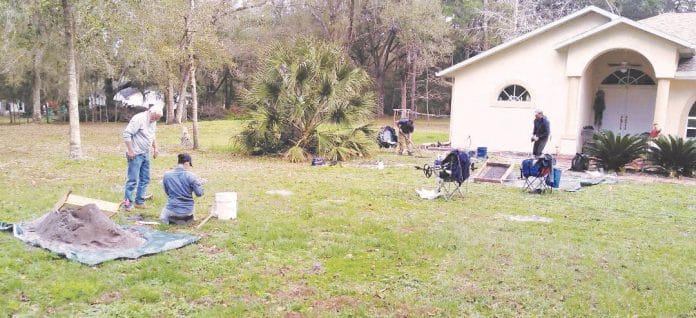By MEGAN HUSSEY
[email protected]
One of the first towns settled by the Creek people in Florida, Chucochatti is highly regarded as a historical and cultural landmark for Hernando County and the State of Florida; renowned in particular, according to Jon Yeager, Hernando Historic Preservation Society member and former chairman of their Archaeological Committee, as the place that marked the site of the ethnogenesis from Creek to Seminole (https://www.hernandosun.com/article/council-says-no-archaeological-research-cemetery-property).
The Gulf Archaeological Research Institute won a grant in Sept. 2018 to “document the history, ethnohistory, and archaeology of Chucochatti and its role in the Second Seminole War.” And in April 2019, the Brooksville City Council granted GARI access to the City of Brooksville property on Emerson Road for the purpose of an archaeological survey to determine the possible location of Chucochatti (also spelled Chocochatti).
Their initial exploratory research and investigation into this property, lead GARI to expand their study area just north of the Brooksville Cemetery, off Jasmine Drive; inspiring Jill Principe, GARI Research Associate, to request permission to access the property; with the aim of conducting systematic metal detection, soil core sampling and shovel test surveys in a discrete manner, with all excavated areas backfilled after the investigation.
Ultimately, the city council denied access to the cemetery property (https://www.hernandosun.com/article/council-says-no-archaeological-research-cemetery-property). Yet GARI researchers are making considerable progress on the Chucochatti project.
“Overall, we are pleased with the progression of the project,” said Principe. “GARI started this project with a very large prospective study area. Throughout the past year, our historical research and surveys have allowed us to narrow that area down to specific targets of interest.”
Presently, said Principe, the team is conducting investigations near Hope Hill Road, off of Cortez Boulevard.
“While we would have welcomed the opportunity to investigate the city property north of the cemetery, we have other areas we intend to explore that will allow us to fulfill our objectives,” she said.
Regarding the Emerson Road property, GARI administered metal detection tests and strategic shovel testing surveys across the city’s property as well as the adjoining FDOT (Florida Department of Transportation) property.
“In doing so, we identified a number of prehistoric lithic scatters and ceramics that indicate a “pre-Chocochatti” occupation of the prairie,” said Principe. “The presence of these types of prehistoric sites are common, and to be expected in this part of Florida.”
Lithic scatter, according to http://mojavedesert.net/glossary/lithic-scatter.html, “is a surface scatter of cultural artifacts and debris that consists entirely of lithic (i.e., stone) tools and chipped stone debris.”
Upon project completion, an accumulative technical report including archaeological field survey findings for all project properties, complete GIS documentation, and a National Register of Historic Places Nomination form, will be completed and submitted to the National Park Service and the Florida SHPO by November 30, 2020.
For more information about the Gulf Archaeology Research Institute, visit www.gulfarchaeology.org.

